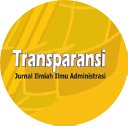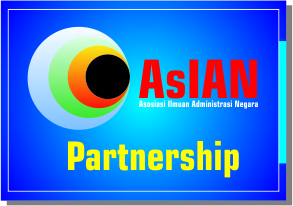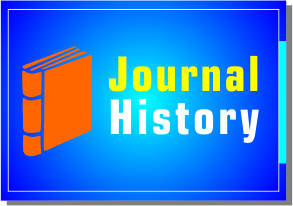Motivasi dan Prospeknya dalam Meningkatkan Kinerja Organisasi : Tinjauan Literatur
DOI:
https://doi.org/10.31334/transparansi.v7i1.3732Keywords:
Keywords, Motivation, Organization, Organization PerformanceAbstract
Abstact : The coal industry in Indonesia is one of the most promising sectors, with trillions of rupiah in revenue each year. However, the rapid growth of this industry is not proportional to the risks it generates. Many coal companies still do not pay attention to This study aimed to determine employee motivation problems on organization performance and its prospects. An effective employee motivation system can inspire employee morale, improve employee productivity, enhance product quality, and create cohesion in the organization. Theories and motivation strategies that encourage the workers to improve their job performance were analyzed. The study adopts secondary sources of data collection for an overall understanding of the subject matter. However, many existing problems have negative impacts on the effective implementation of employee motivation systems. It was argued that there are many ways to enhance the performance of employees in an organization, in this manner, managers ought to endeavor to move forward their proficient quality, make an organizational culture, apply broadened inspiration strategies, pay consideration to representative preparing and career administration, use a complete set of benefits services, implement effective communication channel, set up an evenhanded installment framework as well as construct a great execution assessment framework. ABSTRAK : Penelitian ini bertujuan untuk mengetahui masalah motivasi karyawan terhadap kinerja organisasi dan prospeknya. Sistem motivasi karyawan yang efektif dapat menginspirasi semangat kerja karyawan, meningkatkan produktivitas karyawan, meningkatkan kualitas produk, dan menciptakan kohesi dalam organisasi. Teori dan strategi motivasi yang mendorong para pekerja untuk meningkatkan kinerja mereka dianalisis. Penelitian ini mengadopsi sumber data sekunder untuk mendapatkan pemahaman yang menyeluruh tentang pokok bahasan. Namun, banyak masalah yang ada memiliki dampak negatif pada implementasi sistem motivasi karyawan yang efektif. Dikatakan bahwa ada banyak cara untuk meningkatkan kinerja karyawan dalam suatu organisasi, dengan cara ini, manajer harus berusaha untuk memajukan kualitas mahir mereka, membuat budaya organisasi, menerapkan strategi inspirasi yang diperluas, memperhatikan persiapan perwakilan dan administrasi karir, menggunakan satu set layanan tunjangan yang lengkap, mengimplementasikan saluran komunikasi yang efektif, membuat kerangka kerja cicilan yang adil serta membangun kerangka kerja penilaian eksekusi yang hebat.References
Daftar Pustaka
Amabile, T. M., Hill, K. G., Hennessey, B. A., & Tighe, E. M. (1994). The Work Preference Inventory: assessing intrinsic and extrinsic motivational orientations. Journal of personality and social psychology, 66(5), 950.
Armstrong, M., & Stephens, T. (2005). A handbook of employee reward management and practice. Kogan Page Publishers.
Behn, R. D. (2000). Performance, people, and pay. Bob Behn’s Public Management Report, 1-6.
Cokins, G. (2009). Performance management: Integrating strategy execution, methodologies, risk, and analytics. John Wiley & Sons.
Cook, D. A., & Artino Jr, A. R. (2016). Motivation to learn: an overview of contemporary theories. Medical education, 50(10), 997-1014.
Dike, E. E. (2019). Motivation and Organizational Performance: Problems and Prospects. International Journal of Academic Management Science Research (IJAMSR), 3(4).
Dobre, O. I. (2013). Employee motivation and organizational performance. Review of applied socio-economic research, 5(1).
Ferdinand, D. P. (1974). Management, Tasks, Responsibilities, Practices.
Goodsell, C. T. (2010). Mission mystique: Belief systems in public agencies. Sage.
Jordan, P. J., & Lawrence, S. A. (2009). Emotional intelligence in teams: Development and initial validation of the short version of the Workgroup Emotional Intelligence Profile (WEIP-S). Journal of Management & Organization, 15(4), 452-469.
Lindenberg, S., & Steg, L. (2007). Normative, gain and hedonic goal frames guiding environmental behavior. Journal of Social issues, 63(1), 117-137.
Locke, E. A., & Latham, G. P. (2004). What should we do about motivation theory? Six recommendations for the twenty-first century. Academy of management review, 29(3), 388-403.
Locke, E. A., & Latham, G. P. (2013). Work motivation: The high-performance cycle. In Work motivation (pp. 3-25). Psychology Press.
Maduka, C. E., & Okafor, O. (2014). Effect of motivation on employee productivity: A study of manufacturing companies in Nnewi. International Journal of Managerial Studies and Research, 2(7), 137-147.
Maslow, A. H. (1954). The instinctoid nature of basic needs. Journal of personality.
Meyer, K. E., & Peng, M. W. (2005). Probing theoretically into Central and Eastern Europe: Transactions, resources, and institutions. Journal of international business studies, 36, 600-621.
Paarlberg, L. E., & Lavigna, B. (2010). Transformational leadership and public service motivation: Driving individual and organizational performance. Public administration review, 70(5), 710-718.
Pulakos, E. D. (2004). Performance management: A roadmap for developing, implementing and evaluating performance management systems (pp. 1-42). Alexandria, VA: SHRM foundation.
Ramus, C. A., & Killmer, A. B. (2007). Corporate greening through prosocial extrarole behaviours–a conceptual framework for employee motivation. Business strategy and the Environment, 16(8), 554-570.
Scott Jr, W. E. (1976). The effects of extrinsic rewards on “intrinsic motivationâ€: A critique. Organizational Behavior and Human Performance, 15(1), 117-129.
Shapira, Z. (1976). Expectancy determinants of intrinsically motivated behavior. Journal of Personality and Social Psychology, 34(6), 1235.
Vroom, V. H. (1964). Work and motivation.
Downloads
Published
Issue
Section
License

This work is licensed under a Creative Commons Attribution-ShareAlike 4.0 International License
Please find the rights and licenses in Transparansi : Jurnal Ilmiah Ilmu Administrasi By submitting the article/manuscript of the article, the author(s) agree with this policy. No specific document sign-off is required.
- License
The commercial use of the article will be governed by the Creative Commons Attribution license as currently displayed on Creative Commons Attribution-ShareAlike 4.0 International License.
2. Author(s)' Warranties
The author warrants that the article is original, written by stated author(s), has not been published before, contains no unlawful statements, does not infringe the rights of others, is subject to copyright that is vested exclusively in the author and free of any third party rights, and that any necessary written permissions to quote from other sources have been obtained by the author(s).
3. User Rights
Transparansi : Jurnal Ilmiah Ilmu Administrasi spirit is to disseminate articles published are as free as possible. Under the Creative Commons license, Transparansi : Jurnal Ilmiah Ilmu Administrasi permits users to copy, distribute, display, and perform the work for non-commercial purposes only. Users will also need to attribute authors and Transparansi : Jurnal Ilmiah Ilmu Administrasi on distributing works in the journal and other media of publications.
4. Co-Authorship
If the article was jointly prepared by more than one author, any authors submitting the manuscript warrants that he/she has been authorized by all co-authors to be agreed on this copyright and license notice (agreement) on their behalf, and agrees to inform his/her co-authors of the terms of this policy. Transparansi : Jurnal Ilmiah Ilmu Administrasi will not be held liable for anything that may arise due to the author(s) internal dispute. Transparansi : Jurnal Ilmiah Ilmu Administrasi will only communicate with the corresponding author.
5. Miscellaneous
Transparansi : Jurnal Ilmiah Ilmu Administrasi will publish the article (or have it published) in the journal if the article’s editorial process is successfully completed. Transparansi : Jurnal Ilmiah Ilmu Administrasi editors may modify the article to a style of punctuation, spelling, capitalization, referencing and usage that deems appropriate. The author acknowledges that the article may be published so that it will be publicly accessible and such access will be free of charge for the readers as mentioned in point 3.
Every accepted manuscript should be accompanied by "Copyright Transfer Agreement"prior to the article publication.











